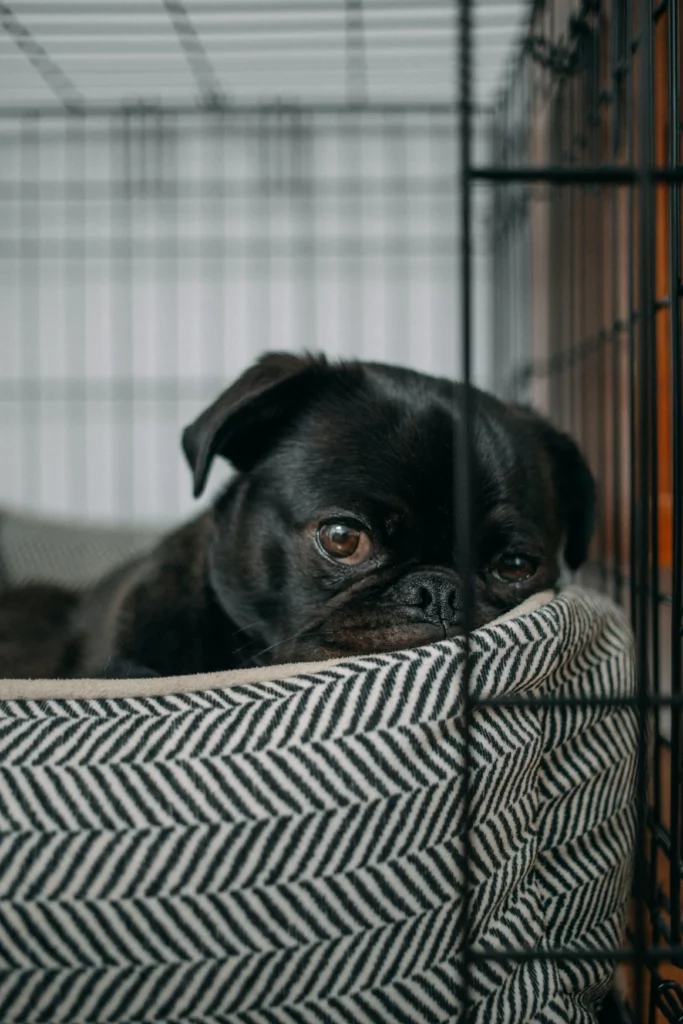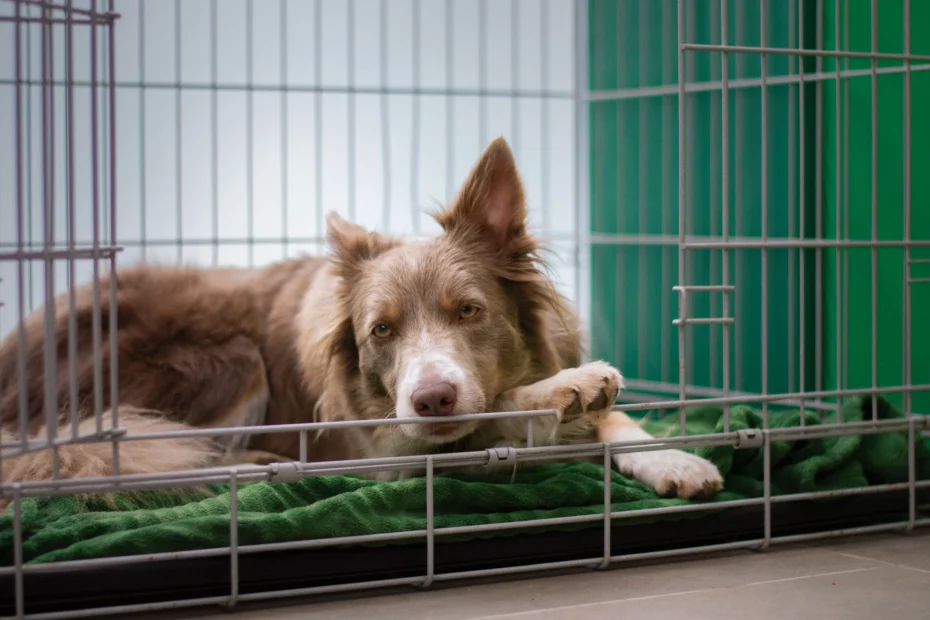The best way to crate train an older dog will vary depending on the individual dog’s personality, obedience training level, and past experiences.
However, some tips on how to crate train an older dog may include using positive reinforcement techniques such as treats or praise to reward good behavior.
Crate train an older dog may take a little longer than crate training a puppy, but it is still possible. You will need to be patient and consistent with your older dog, and make sure that the crate is a positive place for them.
Benefits of crate train an older dog
Crate training can help to manage your dog’s behavior by providing them with a safe and secure space to stay when you are not around to supervise.
This can help to limit the amount of damage that they can do to your home when left unsupervised . This can help to prevent destructive behaviors, such as chewing on furniture or scratching floors. And can also help to keep them calm and relaxed when left alone.
Additionally, crate training can help to potty train your dog by teaching them that they should only relieve themselves in their designated potty area.
Age at which crate training should begin
Some breeds can be trained at an earlier age while others may need to wait until they are older. For example, smaller breeds like Chihuahuas can be trained as young as eight weeks old. While larger breeds like Labs may need to wait until they are six months old.
Crate train plan for your older dog
Older dogs can be trained to use a crate in the same way as a puppy.
- Start with basic obedience commands such as sit, stay, come, down, and off. These will help your dog understand what you expect from him and will give you a way to communicate your expectations clearly.
- Get a crate that is the appropriate size for your dog. He should be able to stand up and turn around comfortably inside of it. Put a soft bed or blanket inside.
- Put the crate in a location that is comfortable for your dog and where there is less distractions.
- Introduce your dog to the crate gradually. Start by feeding him his meals inside of it and praising him when he goes inside.
- Once your dog is comfortable eating inside the crate, begin closing the door for short periods of time while you are still in the room.
- Gradually increase the amount of time the door is closed until your dog is comfortable being in the crate for extended periods of time.
- If your dog begins to whine or Bark while in the crate, do not let him out. This will only teach him that he can get out if he makes a fuss.
- Once your dog is comfortable in the crate, you can begin leaving him alone for short periods of time. Start with just a few minutes and gradually increase the time.

Monitor your dog’s crate use and adjust the crate training plan as needed
Monitor your dog’s crate use and adjust the crate training plan as needed. If you find that your dog is making progress, leave the crate door open for longer periods of time or during the day. If you find that your dog is regressing, either slow down the training schedule or increase the time the dog spends in the crate during the day.
Make the crate a happy place. Put a soft blanket or towel in the crate and give the dog a toy to keep it company.
Dogs are social creatures and need companionship, even when in the crate. Pay attention to your dog’s body language.
If the dog is getting anxious or stressed in the crate, this is not the right training method for your dog. Crate training takes time, so don’t expect your dog to adjust overnight. Be patient and consistent to ensure the best results.
Crate training may need to be adjusted if your dog is not responding well to the crate. If your dog is barking or whining in the crate, try to crate him for shorter periods of time. You may also need to increase the amount of time for your dog when it is out of the crate.
Conclusion
Even though crate training is usually the common way to train puppies, adult dogs can benefit from spending time in a crate. If you have a new dog or puppy, you can use crate training to teach your dog the house rules and help it feel comfortable and secure in its new home.
Crate training can also help an adult dog that is having housebreaking accidents or destroying property when left alone. Crate training takes time, patience and consistency.
The goal is to get your dog used to spending time in the crate and to associate the crate with positive experiences.
